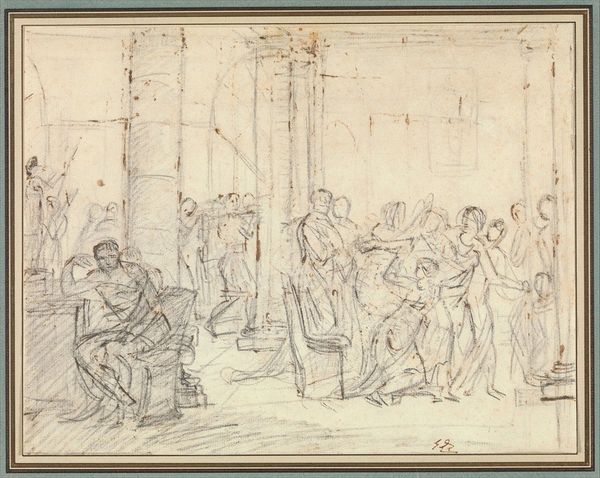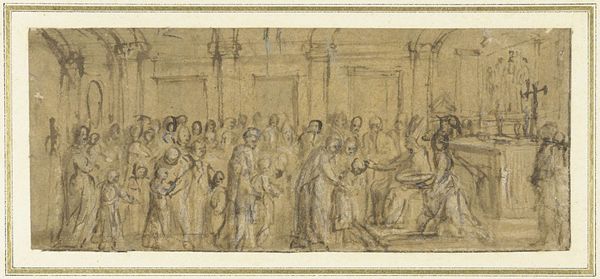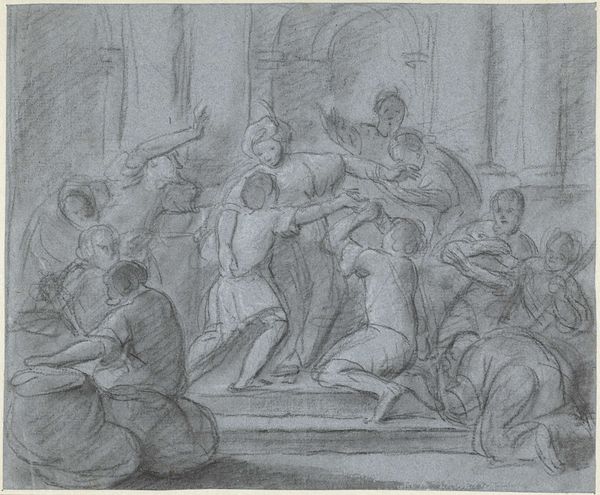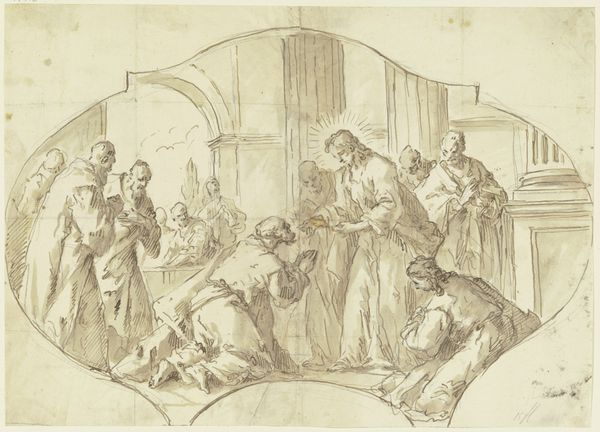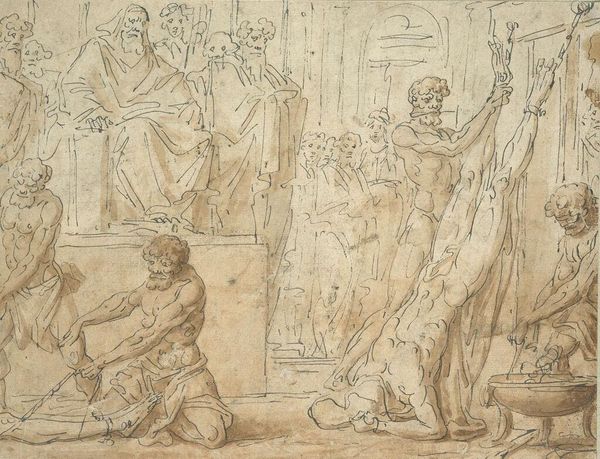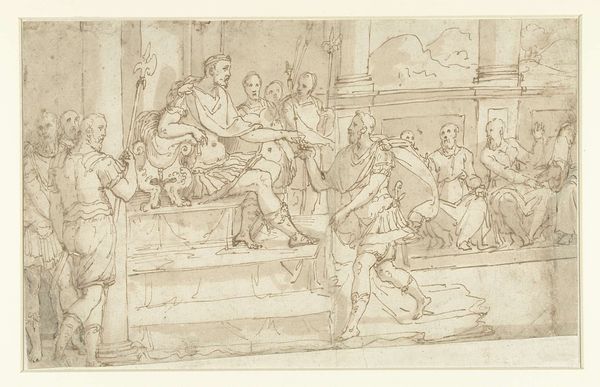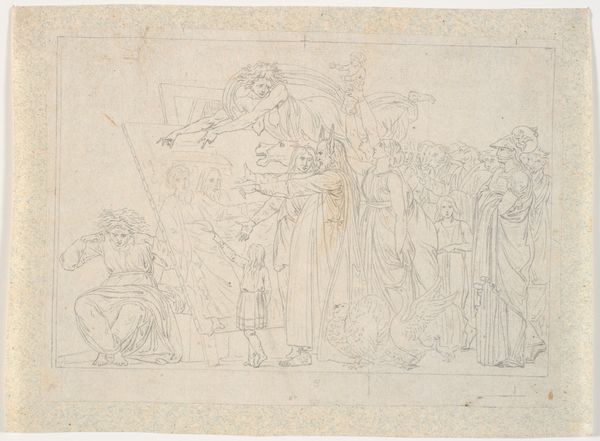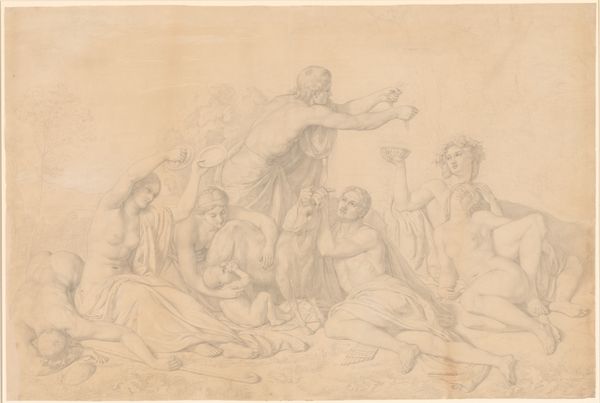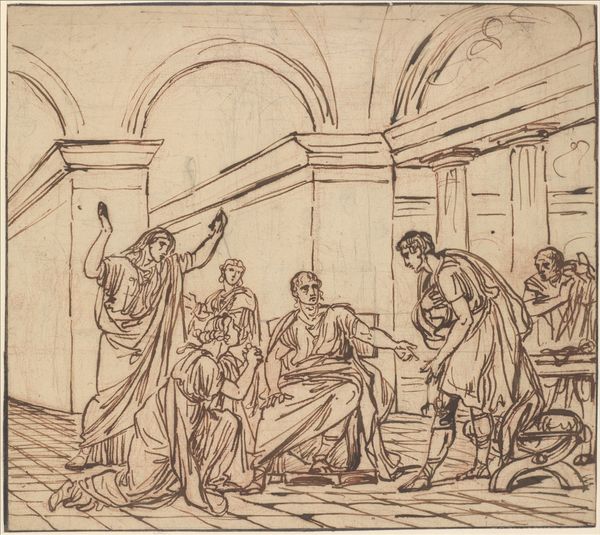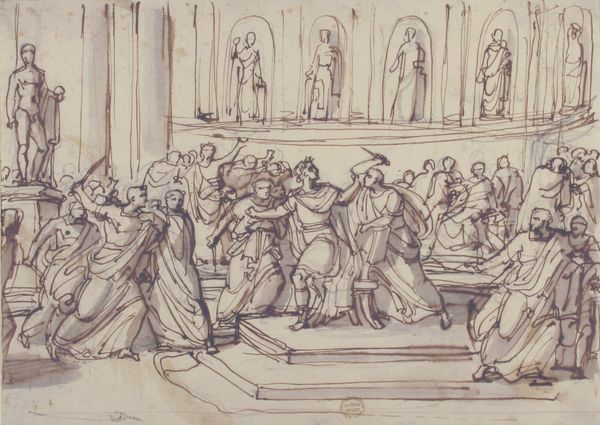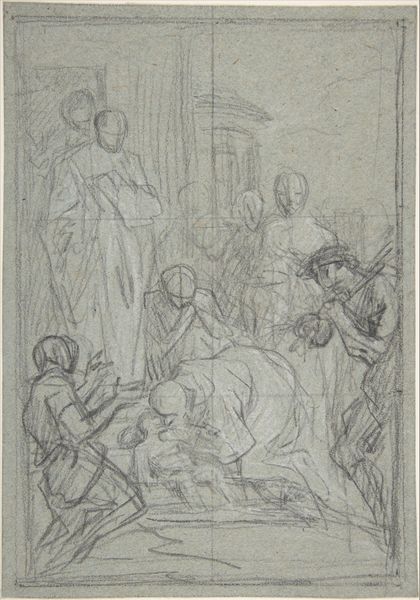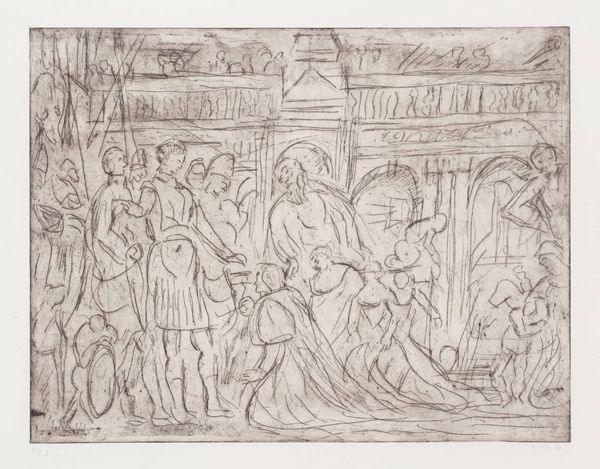
drawing, pencil
#
drawing
#
neoclacissism
#
figuration
#
coloured pencil
#
pencil
#
history-painting
Copyright: Public Domain: Artvee
Curator: Here we have Anne-Louis Girodet’s “Scene from the Last Act of Corneille’s Rodogune,” dating back to 1800. It’s a pencil and colored pencil drawing, a preparatory sketch for a larger painting that captures a climactic moment from the tragic play. Editor: My initial impression is one of tension. There's a dramatic tableau of figures caught mid-action, their postures and gestures communicating a sense of conflict and impending doom. Curator: Girodet was deeply invested in Neoclassicism, which sought to revive the artistic ideals of ancient Greece and Rome. Historical and literary subjects became popular within the salons of the time, as they offered an educational lens to address the present through historical comparisons. "Rodogune," by the famous tragedian Pierre Corneille, portrays familial intrigue and ruthless power struggles in a royal family of ancient Syria. Editor: Visually, the image seems dominated by sharp angles, like those formed by the soldiers’ spears. The woman holding out what looks to be a chalice or a cup radiates a symbolic threat. This piece resonates with archetypal themes of betrayal, poison, and manipulation that one could say are common visual representations of the fall of monarchies and other systems of power. Curator: That's a fascinating interpretation, thinking about monarchies as a visual trope. Girodet was a student of Jacques-Louis David, and like his teacher, his artistic career developed during the French Revolution, with images being used in specific ways to represent certain values. He, too, went on to produce propagandist works of art. Therefore, it's not hard to assume that this work has underlying allegories. This preparatory drawing certainly embodies Neoclassical ideals, doesn't it? Clear, legible figures, theatrical lighting... Editor: Yes, absolutely, one can see his allegiance to the artistic trends. It's fascinating how the figures seem almost frozen. Girodet freezes this tragic moment and the moment before fate reveals itself to these figures. Even in the absence of color, it conveys such emotional depth. Curator: Looking at this today allows one to trace the different purposes images serve in political turmoil. In a way, this image’s original social intention differs vastly from its use in today's political climate, thus opening the possibility for the symbol of struggle and social turmoil to become abstracted in itself. Editor: Yes, symbols adapt and change over time, taking on new layers of meaning with each interpretation and cultural shift. Looking at "Scene from the Last Act of Corneille’s Rodogune" shows us just how resonant visual language can be, across centuries and contexts.
Comments
No comments
Be the first to comment and join the conversation on the ultimate creative platform.
